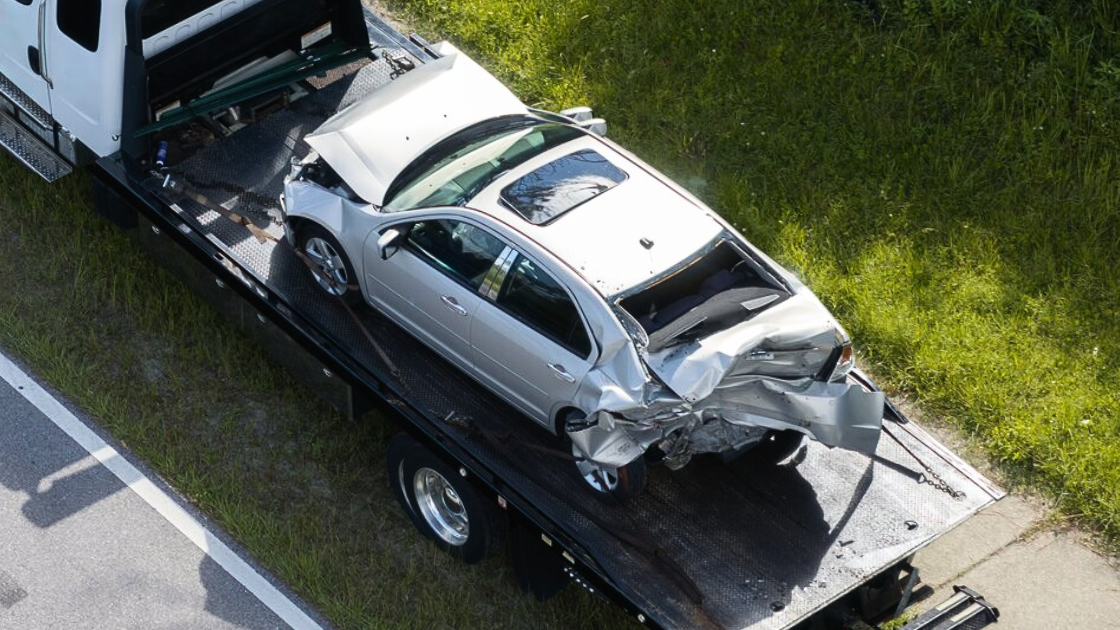
Welcome to another edition of the Car Dealership Guy Industry Spotlight Recap newsletter.
On this episode of the Industry Spotlight, host Sam D’Arc sits down with Cody Hansen, Fixed Ops Director at Ferman Automotive Group, and Matt Gonzalez, Senior Account Executive at Uber for Business, to unpack how Ferman is boosting shop efficiency, reducing liability, and speeding up parts and service performance across 11 rooftops and 4 Harley-Davidson stores.

1. Service drives loyalty—and long-term sales.
The adage at Ferman Automotive Group—which includes 11 auto dealerships and four Harley-Davidson dealerships—is “sales sells the first one and service sells the rest.”
“If we don't take care of them in service, we typically don't see them back on the sales side.” — Cody
Prioritizing people and the process is key in the service department. And that mindset is especially relevant today, as aging inventory and post-COVID repair demand make fixed ops a key growth area for the group.
2. Every buyer should meet the service team—every time.
Introducing new car buyers to the service department goes a long way.
“It's always great to meet the guest when they're happy on the day they buy the car. Not on the day when they're not happy, when their car's not perfect.” — Cody
That applies to repeat buyers, not just first-time customers. Even if a customer has purchased ten cars, Cody believes every handoff is a chance to reinforce trust and familiarity with new service staff.
3. Ferman built its own technician pipeline.
Under Cody’s leadership, Ferman Automotive started its own tech training program to meet the challenges associated with finding good local technicians.
“It's been great because it meets the applicant and the technician where they're at… If they come in part of the way through, we're able to start them wherever they're at.” — Cody
When a student graduates, Ferman Automotive knows exactly what skills the graduate brings to the service team. The program was born out of frustration with traditional tech school pipelines—and built in-house in just a few months.
4. Outsourcing guest transportation freed up techs and time.
One of Ferman Automotive’s most notable service process changes has been shifting transportation logistics out of the store.
“Some of our brands have pickup and delivery options or mobile service. And with traffic in Tampa, in-house shuttles are limited—there’s only so many people you can move in a day.” — Cody
To free up internal capacity and keep techs focused on repairs, Ferman outsourced transportation and reallocated those hours to higher-value work. The decision was driven as much by liability and safety as it was by productivity.

Uber For Business - With Uber for Business, dealerships create a seamless experience for their customers, while helping them get employees and parts where they need to go. Thousands of dealerships have implemented Uber for Business to bolster current offerings, with the goal to increase efficiency, optimize costs and create a superior customer experience. Learn more about how Uber can support your dealership's goals at t.uber.com/CDGauto.
5. Ride-share is now standard for guest pickup and drop-off.
Ferman primarily uses third-party ride services to move guests to and from the dealership.
“We can take a guest home; we can bring a guest back to the dealership when their car's ready. It’s pretty easy. And most of our guests… they're so used to using a ride share in their life.” — Cody
For most customers, it’s seamless—and far more convenient than waiting for a shuttle. It’s also helped the store reduce its dependency on expensive loaner fleets.
6. Advisors can now dispatch rides in seconds.
For Ferman, integrating ride-share tools into fixed ops was less about novelty and more about fit.
“If you analyze the landscape of a dealership, it was just a perfect fit. Instead of running a shuttle, you can move customers to and from the store with far more flexibility.” — Matt
This model enables advisors or BDC staff to handle transportation with just a few clicks. And with platforms like Uber Central, customers don’t even need the app—rides are booked and texted to them directly.
7. Special-order parts now move twice as fast.
Ferman began using ride services for parts delivery after seeing success at one of its larger Tampa stores.
“This cuts our labor costs by a large margin. We're getting the part twice as quick. Our guests are happier, we can turn waiters faster. It was just the best thing ever.” — Cody
Compared to sending a driver out in a van, it’s a major efficiency upgrade—some stores use it multiple times a day. The service is used for single-order jobs where uptime is the priority—especially special orders already in the shop.
8. Dealer trades are now one-way—and more efficient.
The group also uses third-party rides to simplify dealer trades.
“We can do one-way dealer trades, deliver the car, and then Uber back.” — Cody
In some cases, they’ve even used it to bring food in for guests or staff—small gestures that support a better customer experience. It's another way to reduce unnecessary employee driving and keep the team focused on higher-value tasks.
9. The savings go beyond dollars.
Across all use cases—from customer pickups to internal logistics—outsourcing transportation has delivered substantial savings.
“We’re talking hundreds of thousands annually. It could even be a multiple of that.” — Cody
But more than just cost-cutting, it’s improved customer satisfaction and operational flow. And it’s helped minimize one of the biggest liabilities in auto retail: employees driving customer or company vehicles.
10. Next up: parts pooling, flexible vouchers, and loaner alternatives.
Matt sees even more potential ahead.
“On the parts side, the biggest opportunity is large groups with multiple rooftops under the same OEM—running parts between stores.” — Matt
As shuttle alternatives and parts movement evolve, the next phase is optimizing them at scale. Ferman is already looking at using ride credits and vouchers as flexible perks or replacements for low-utilization loaners.
Did you enjoy this edition of the Podcast Recap newsletter?
Interested in advertising with Car Dealership Guy? Drop us a line here.
Want to be considered as a guest on the podcast? Add your name here.








